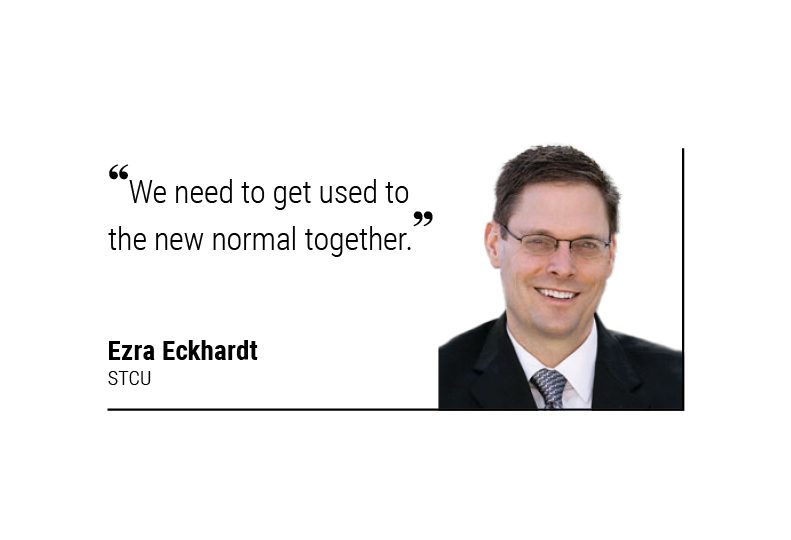
Home » Financial institutions prepare for static interest rate environment
Financial institutions prepare for static interest rate environment
Banks, credit unions adjust to new normal

June 20, 2024
Leaders from financial institutions in the Inland Northwest are prepared for a prolonged high interest rate environment.
Even if cuts to the effective federal funds rate, which has been held at 5.3% since July, do occur late this year, most observers expect those drops to be minimal.
Steve Scranton, chief investment officer and economist for Washington Trust Bank, says most financial institution’s net interest margins suffered in 2023 due to the dramatic rise in interest rates. Net interest margins refer to a measure of a financial institution's profitability. Typically, banks and credit unions earn most of their revenue on the difference between what they charge for loans and what they pay out to depositors and lenders. Moving into 2024, financial institutions have adjusted to the new environment and have prepared for a slower rate of growth.
“The Federal Reserve has been pretty clear that they have no intention of lowering rates until they see further progress on inflation,” Scranton says. “Most banks have had this scenario that they’re preparing for rates to remain at these levels most of the year.”
As predicted, Federal Reserve officials left interest rates unchanged at their most recent meeting in June and suggested the possibility of cutting borrowing costs one time before the end of the year.
Inflation and employment have stayed above the Federal Reserve’s objective, compelling Fed officials to keep the federal funds rate at 5.3%. According to the U.S. Bureau of Labor Statistics, the current rate of inflation is 3.4%, over a percentage point above the Federal Reserve’s 2% objective. The unemployment rate is currently at 3.6%, down from 4% in May. Industry leaders say an unemployment rate closer to 5% is optimal.
Ezra Eckhardt, president and CEO of Liberty Lake-based STCU, says the credit union prepared for less spending and purchasing from its members this year. Moreover, he had expected the Federal Reserve to raise interest rates to 6% or above in order to curtail inflation and increase unemployment. Like many of his peers, Eckhardt points out that the current interest rate environment isn't high when compared to the 55-year Fed funds average of about 5.4%. Rather, people have become accustomed to the historically low interest rates that have been in effect since 2008.
“We’re all so used to the Federal Funds rate of zero and having the ability to have a 3% mortgage, and a 4% car loan, or 1.99% if you’re lucky,” Eckhardt says. “We’ve all become hooked on the crack of low interest rates, and we’re going through the process of relearning what the real cost of money is. It’s going to take some time. It’s not what we’re used to as consumers, but the Fed is retraining us to get back on track.”
Ben Richardson, chief financial officer for Spokane Valley-based Numerica Credit Union, says the biggest impact has been on mortgage loans. There is an entire generation of people in their 30s who are getting ready to purchase a home, but because all they’ve ever known for the last 15 years has been historically low interest rates, it has stalled many from purchasing a home in the current environment, he says.
“If you’ve never lived through higher interest rates and all you’ve ever seen in your working life is low interest rates, it will seem like a shock,” Richardson says. “That’s really impacted our mortgage volumes. That’s a trend the entire financial services industry—at least in our area—has seen mortgages pull back quite a bit.”
As forecasted, the overall loan production for commercial loans, mortgage loans, and consumer loans is less than last year, Richardson says. Numerica has prepared for every possible loan environment with the advice of the Federal Reserve in mind that it won’t lower interest rates unless inflation decreases.
The financial markets had predicted that the Federal Reserve would cut interest rates by 1 1/2 percentage points by March, Scranton says. However, financial markets are a better indicator of the health of corporate America and corporate profit, he says. When it comes to predicting interest rates, he advises to heed the guidance of the Federal Reserve, which has stated it won't lower rates until it sees significant change.
“The financial markets essentially, for the past 1 1/2 years, have ignored what the Fed has told them,” Scranton says. “The financial markets have said, 'I don’t believe you,' and they get punished each time because the Federal Reserve does exactly what it said it was going to do.”
Scranton says it’s possible the Federal Reserve will cut interest rates later this year, most likely after the presidential elections in November, and only if the economy has slowed significantly. He says he doubts there will be significant progress made on inflation, but he foresees a scenario in which consumers begin to hit a wall on their credit card use, leading them to cut down on spending, which will slow the economy and compel the Federal Reserve to cut rates to prevent an economic recession.
“I’m not really encouraged that we’re going to see dramatic progress on inflation,” he says. “It’s fairly sticky right now.”
Eckhardt says the current interest rate environment is the new normal. While rates are high and spending is tight, the local economy is poised for growth with the arrival of new businesses and a potential new aerospace tech hub, he says. In May, he helped debut the newly completed phase of the Concourse C west terminal expansion at Spokane International Airport. The airport’s multiyear, multiphase expansion is expected to grow passenger volume by 50% over the next 10 years.
“In the grand scheme of things, we just need to go through the journey together,” Eckhardt says. “We need to get used to the new normal together.”
Latest News Up Close Banking & Finance
Related Articles
Related Products




![Brad head shot[1] web](https://www.spokanejournal.com/ext/resources/2025/03/10/thumb/Brad-Head-Shot[1]_web.jpg?1741642753)
